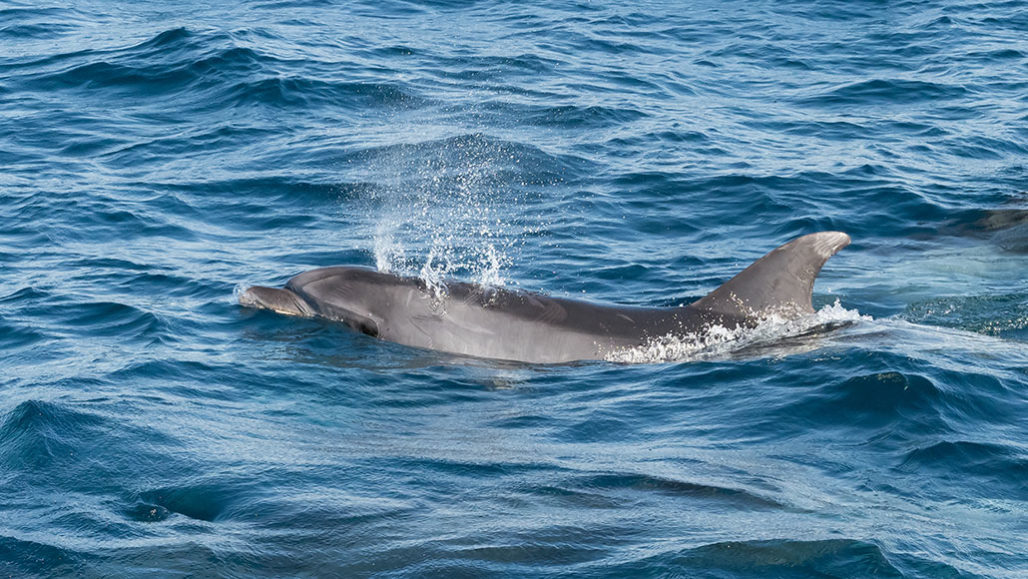Fluid dynamics may help drones capture a dolphin’s breath in midair / La dinamica fluida può aiutare i droni a catturare il respiro di un delfino a mezz'aria
Fluid dynamics may help drones capture a dolphin’s breath in midair / La dinamica fluida può aiutare i droni a catturare il respiro di un delfino a mezz'aria
Segnalato dal Dott. Giuseppe Cotellessa / Reported by Dr. Giuseppe Cotellessa

Researchers analyzed the fluid dynamics of the plume expelled when an Atlantic bottlenose dolphin exhales. Drones could monitor dolphins’ health by capturing some of the spray. / I ricercatori hanno analizzato la fluidodinamica del pennacchio espulso quando esplode un delfino tursiope atlantico. I droni potrebbero monitorare la salute dei delfini catturando parte dello spray
SUE ROBINSON/SHUTTERSTOCK
If you’ve ever had trouble catching your breath, try catching a dolphin’s.
The plume produced when dolphins come up for air could reveal information about their health. But capturing samples of the spray from agile, skittish wild dolphins is challenging. To make the task easier, a team of engineers has characterized the flow of a dolphin’s chuff, a forceful exhale that sends water, air and mucus hurtling skyward.
High-speed video of captive Atlantic bottlenose dolphins reveals that each chuff lasts around a quarter of a second, beginning with a brief spurt of water flung off the top of the blowhole, says engineer Alvin Ngo of Oklahoma State University in Stillwater. Then comes a second wave: the exhale. That powerful outflow produces a turbulent jet moving at a maximum speed of nearly 100 kilometers per hour, Ngo and colleagues reported November 24 in Seattle at the American Physical Society’s Division of Fluid Dynamics meeting.
The expelled mucus contains health indicators, particularly the stress hormone cortisol. So understanding these chuffs could help scientists design drones that would swoop in to catch the spray and reveal, for example, whether a pod is stressed by human activity. Researchers previously have used drones to sample spouts from whales, but dolphins produce less spray, complicating efforts.
The plume produced when dolphins come up for air could reveal information about their health. But capturing samples of the spray from agile, skittish wild dolphins is challenging. To make the task easier, a team of engineers has characterized the flow of a dolphin’s chuff, a forceful exhale that sends water, air and mucus hurtling skyward.
High-speed video of captive Atlantic bottlenose dolphins reveals that each chuff lasts around a quarter of a second, beginning with a brief spurt of water flung off the top of the blowhole, says engineer Alvin Ngo of Oklahoma State University in Stillwater. Then comes a second wave: the exhale. That powerful outflow produces a turbulent jet moving at a maximum speed of nearly 100 kilometers per hour, Ngo and colleagues reported November 24 in Seattle at the American Physical Society’s Division of Fluid Dynamics meeting.
Gobs of mucus go flying when Atlantic bottlenose dolphins breathe. Studying the spray could aid attempts to collect wild dolphins’ mucus and monitor their health. / Gocciolamenti di muco volano quando i delfini tursiopi respirano. Studiare lo spray potrebbe aiutare i tentativi di raccogliere il muco dei delfini selvatici e monitorarne la salute.



Commenti
Posta un commento